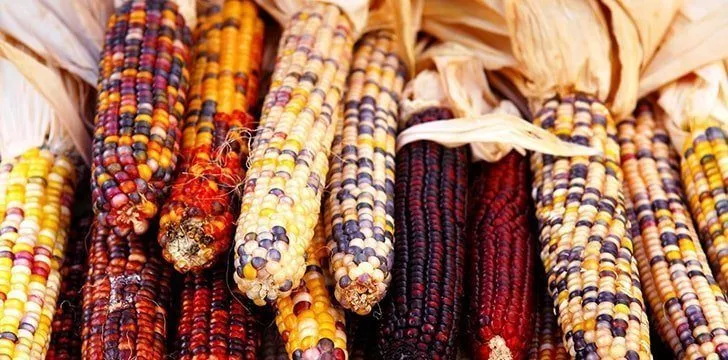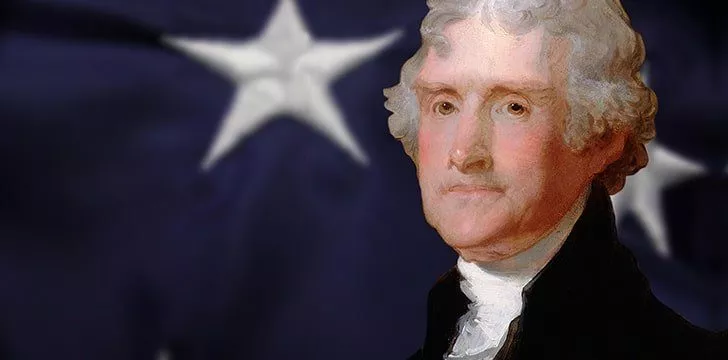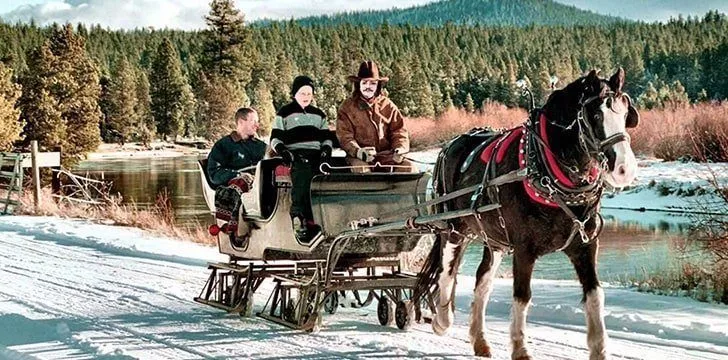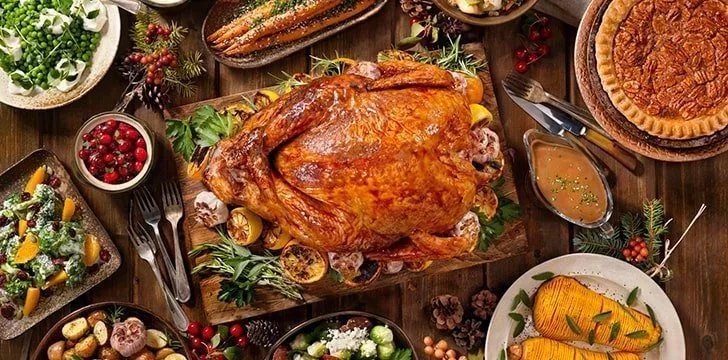Did you know that on average an individual consumes 4,500 calories during their Thanksgiving meal?
Thanksgiving is undeniably the best food-related celebration of the year!
While most of us are familiar with the popular story of the Pilgrims having a feast with Native Americans, there’s more to the holiday than meets the eye.
From obscure Thanksgiving origins to Presidents who didn’t support it and the amount of turkey we consume, The Fact Site has got you covered!
- Thanksgiving dates back to before Plymouth Rock.
- Thomas Jefferson was opposed to Thanksgiving.
- The Pilgrims never referred to themselves as Pilgrims.
- Thanksgiving is observed outside the U.S.
- Days of thanksgiving entailed not eating.
- “Jingle Bells” was Meant to be a Thanksgiving Song
- The Average Person Consumes 4,500 Calories at Thanksgiving Dinner
- FAQ
Thanksgiving dates back to before Plymouth Rock.

Many people assume that Thanksgiving’s origins stem from the friendly feast shared between the Pilgrims and the Native Americans in 1620.
However, there’s significant disagreement over the true origins of Thanksgiving.
According to the National Parks Service, in 1565, the Spanish established a settlement called St. Augustine and celebrated by having a meal to which they invited the native Seloy tribe. The Spanish likely enjoyed pork stew, sea biscuits, garbanzo beans, and red wine, while the Seloy tribe might have contributed turkey, maize, and venison.
Thomas Jefferson was opposed to Thanksgiving.

Thomas Jefferson didn’t harbor any animosity towards the idea of gratitude, but he saw Thanksgiving as a blurred line.
Jefferson was a strong advocate of separation between church and state, and endorsing Thanksgiving implied state-sponsored religion.
In fact, he went so far as to say that making Thanksgiving a National Holiday was “a ridiculous proposition.”
Thanksgiving didn’t become a national holiday until after the Civil War tragedy, when Abraham Lincoln declared Thanksgiving Day a national holiday on October 20, 1864.
The Pilgrims never referred to themselves as Pilgrims.

The term “Pilgrim” wasn’t used until the 1880s. Back then, the Pilgrims referred to themselves as separatists.
The word “pilgrim” means “a person who journeys to a sacred place for religious reasons.” Meanwhile, a separatist is a group, essentially a minority group, that separates itself from a larger belief system.
Thanksgiving is observed outside the U.S.

Although Thanksgiving is predominantly recognized as an American holiday, it’s celebrated in a few other regions as well.
Canada, America’s northern neighbor, also celebrates Thanksgiving. The main difference between the two holidays is that Canada celebrates their Thanksgiving over a month earlier.
Other countries that celebrate Thanksgiving include Grenada, which celebrates on October 25th, although the background is unrelated. Similarly, Liberia, the Philippines, Saint Lucia, and the Netherlands observe a version of Thanksgiving.
Many of the Pilgrims who migrated to Plymouth Rock originated from Leiden, Netherlands. They celebrate the hospitality that the Dutch Pilgrims received.
Days of thanksgiving entailed not eating.

Thanksgiving holiday is primarily centered on the Pilgrims of the Mayflower having a feast with friendly Native Americans at Plymouth Rock.
Before the first Thanksgiving, it was customary to fast and pray as a form of religious practice to express gratitude. The settlers originally intended to fast for three days to celebrate their first harvest until the Wampanoah Indians joined them and turned it into a three-day feast.
A tradition of pardoning a turkey began when Lincoln was president. His son begged him to spare the turkey that was going to be killed for Thanksgiving dinner. Lincoln agreed, and this started a tradition that continues today, with one lucky turkey being pardoned by the president and sent to live on a farm. In some cases, the pardoned turkeys even get to be grand marshals in Thanksgiving parades at Disneyland and Disney World.
Thanksgiving used to be celebrated on the last Thursday of November, but in 1939, President Roosevelt moved it to the third Thursday to allow for an extra week of holiday shopping. However, this change was unpopular with citizens, and it was officially changed back to the fourth Thursday in November by law in 1941.
The National Day of Mourning is a counter-protest to Thanksgiving organized by the United Native Americans of New England to recognize the suffering of their people, particularly during the Pequot War when 700 Pequot Indians were killed by colonists and hundreds were sold into slavery. They protest the exploitation and oppression of their culture.
Sarah Josepha Hale, the author of “Mary Had a Little Lamb,” played a significant role in making Thanksgiving a holiday. She wrote to the president for 17 years, using her platform as the founder of the American Ladies Magazine to promote women’s rights and persuade recognition of Thanksgiving. She believed the holiday could help unite the North and South states during times of tension and division.
In 1863, after sending one of her letters, Lincoln became the first President to pay attention to her and created a Thanksgiving proclamation, making it a national holiday. TV dinners came about in 1953 after an employee of Swanson accidentally ordered 260 tons of Thanksgiving turkeys. In order to get rid of them, a salesman came up with the idea of packaging a full meal on aluminum trays, which sold for 98 cents and became a hit. While turkey is a popular main dish for Thanksgiving, only 88% of Americans choose it. The rest prefer ham or are vegetarian/vegan. The Macy’s Thanksgiving Parade first featured balloons in 1928, and anyone who found a grounded balloon and returned it would receive a Macy’s gift card. Apple pie is the most popular dessert choice for Thanksgiving, with 20% of Americans choosing it, followed by strawberry at 19%, and pumpkin at 16%. However, about 50 million pumpkin pies are still consumed every year during Thanksgiving.
“Jingle Bells” was Meant to be a Thanksgiving Song

It is a strange fact that we do not have any Thanksgiving songs today, but “Jingle Bells” was originally written by James Lord Pierpont to commemorate Thanksgiving in 1857.
The town of Medford, where the song was composed, was famous for its sleigh races, hence the lyrics “one-horse open sleigh”.
Interestingly, the song was also intended to be a drinking song as Medford was a major center for rum-making.
Some of the lyrics suggest that it is a song to be sung while drinking and reminiscing about drunken events.
The next time you hear “Jingle Bells”, you will have a different perspective on its origins!
The Average Person Consumes 4,500 Calories at Thanksgiving Dinner

Although we know we overindulge at Thanksgiving, did you know that the average person eats 4,500 calories at this feast?
This is equivalent to consuming 28 donuts, 16 slices of pizza, or 61 chicken wings.
Many people believe that hitting the gym for an extra two hours can compensate for this, but unfortunately, it would take over 7 hours of running or over 15 hours of brisk walking to burn off the calories.
However, it is a special occasion, so in our opinion, indulging in one cheat day per year is not a bad thing!
FAQ
1. What is the origin of Thanksgiving?
Thanksgiving is a traditional American holiday that celebrates the harvest and blessings of the year. It has its roots in the 1621 harvest feast that the Pilgrims shared with the Wampanoag Indians in Plymouth, Massachusetts. The feast lasted for three days and included turkey, fish, shellfish, vegetables, and fruits. The celebration was repeated annually, and it became a national holiday in 1863 when President Abraham Lincoln declared it so.
2. Why do we eat turkey on Thanksgiving?
The tradition of eating turkey on Thanksgiving dates back to the early days of the holiday. The Pilgrims and Native Americans at the 1621 feast likely ate wildfowl, such as ducks or geese. However, by the 1800s, turkey had become a popular choice for Thanksgiving dinner, and it remains the centerpiece of most traditional Thanksgiving meals today.
3. What is a cornucopia?
A cornucopia, also known as the “Horn of Plenty,” is a symbol of abundance and prosperity. It is often depicted as a horn-shaped basket filled with fruits, vegetables, and other foods. The cornucopia has been associated with Thanksgiving since the Pilgrims’ first harvest feast, and it is still a popular decoration for Thanksgiving tables and displays today.
4. Do other countries celebrate Thanksgiving?
While Thanksgiving is primarily an American holiday, several other countries have similar harvest celebrations. In Canada, Thanksgiving is celebrated on the second Monday of October, and it has been a national holiday since 1879. Other countries with harvest festivals include Liberia, Grenada, and the Philippines.
5. Why do Americans watch football on Thanksgiving?
Watching football on Thanksgiving has been a tradition in the United States since the 1930s. The first Thanksgiving Day football game was played in 1934 between the Detroit Lions and the Chicago Bears. Today, it is a common pastime for families to watch football together after their Thanksgiving meal.
6. What is Black Friday?
Black Friday is the day after Thanksgiving and is traditionally one of the busiest shopping days of the year. It is known as “Black Friday” because it is the day when retailers hope to turn a profit, or “get in the black,” after a year of losses. Black Friday sales often start early in the morning and continue throughout the day, with many stores offering deep discounts to attract shoppers.
7. What is the Macy’s Thanksgiving Day Parade?
The Macy’s Thanksgiving Day Parade is an annual tradition in New York City that began in 1924. The parade features giant balloons, floats, marching bands, and performances by celebrities. The highlight of the parade is the appearance of Santa Claus, which marks the unofficial start of the Christmas season.

Zayn Anderson is a prolific writer with a passion for uncovering the world’s intriguing facts. Armed with an insatiable curiosity, he delves into various subjects, from history and science to nature and technology.
